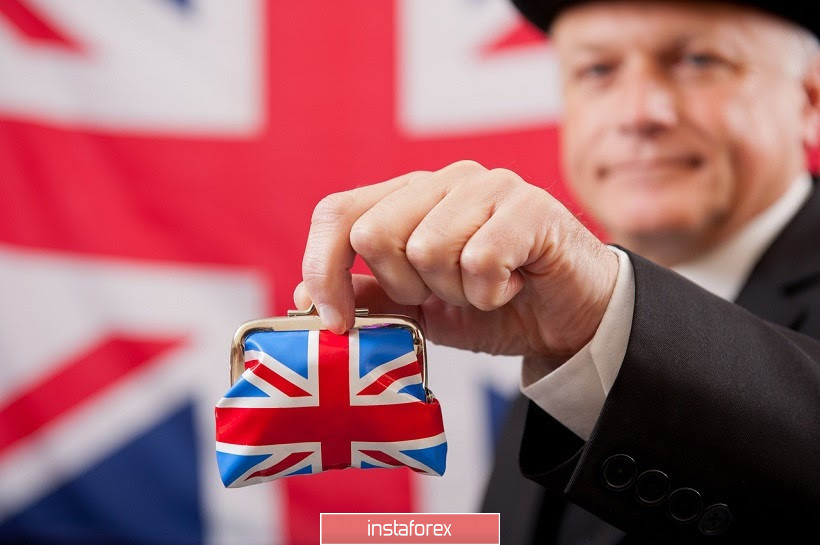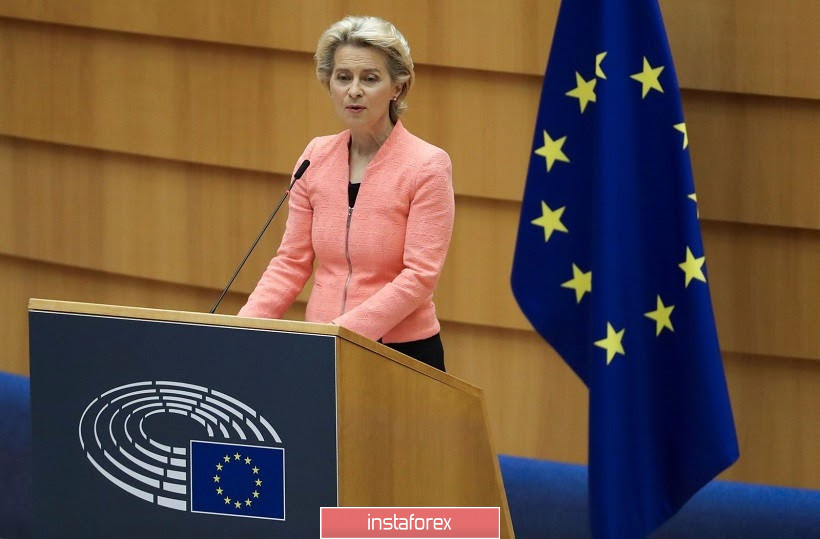The British pound reacted negatively to the results of the September meeting of the Bank of England. The possibility of introducing negative interest rates (though, in a hypothetical context) was mentioned once again in the text of the accompanying statement. This issue is very painful for GBP/USD traders, so the reaction of the pound was not long in coming. Secondly, the central bank was quite pessimistic about the prospects for the economy's recovery: the BoE confirmed the risk of a longer period of unemployment growth, while recognizing the weak dynamics of the recovery process. This attitude also put pressure on the British pound - it weakened to 1.2864 against the dollar. But the bears could not develop the downward trend: the latest news regarding Brexit prospects turned the pair 180 degrees, after which the price returned the lost points in just a few hours. As a result, the GBP/USD pair ends the trading day in almost the same positions as it started.
Why is the market so careless about the BoE's dovish rhetoric? Here it is necessary to recall the background of the issue. For the first time, rumors that the British central bank may introduce a negative rate appeared in early May, when macroeconomic indicators initially reflected the scale of the economic disaster. Then, BoE Governor Andrew Bailey returned to this issue at each subsequent meeting. At first, he admitted such a scenario, but then became more skeptical about the idea. For example, at a previous meeting, he said that "negative rates are part of the stimulus measures of the central bank, but they will not be used in order to bring the British economy out of the coronavirus crisis."

Therefore, buyers of the GBP/USD pair were unpleasantly surprised by the news that the central bank discussed the effectiveness of using negative interest rates "if the need arises." The accompanying statement indicates that the BoE may resort to this scenario "if the prospects for inflation and production justify the rate below zero."
And yet, despite such a dovish rhetoric of the accompanying statement, the results of the September meeting only briefly pulled down the pound. Firstly, many members of the Committee are against the rate cut and have been before (even at the peak of the epidemic). In their reasonable opinion, this step has too many side effects, and not only for the banking sector. Secondly, investors are no longer frightened by anti-records in British macroeconomic indicators in recent years. Take inflation and the labor market. The consumer price index showed positive dynamics on an annualized basis, after a strong decline in July. Core inflation also rose: the core consumer price index exceeded the forecasted values and reached 0.9%. The labor market also pleased market participants. The unemployment rate rose predictably to 4.1%. At the same time, salaries were in the green zone, contrary to the pessimistic forecasts of experts.
In my opinion, the BoE has started talking about the negative rate with a "preventive purpose". Figuratively speaking, the central bank is gradually preparing traders for the implementation of such a scenario, if the UK ultimately fails to conclude a trade deal with the European Union, and the transition period is not extended. The transition to the "WTO rails" can be painful for the country's economy, and in this case, the British central bank can really decide on drastic measures.
But under the current conditions, the central bank is unlikely to resort to rate cuts. Therefore, the rhetoric of the accompanying statement must be viewed through the prism of the current Brexit talks.
The controversial UK Internal Market Bill, which knocked the pound down last week, is under consideration in the House of Commons. Many Conservative MPs publicly criticize its main provisions. There were doubts in the market that the Parliament would approve the bill - at least in the form in which Prime Minister Boris Johnson presented it. These doubts make it possible for the pound to gradually approach the 30th figure. In addition, today the head of the European Commission, Ursula von der Leyen, voiced unexpectedly optimistic theses - in particular, she expressed confidence that a trade deal between the EU and Britain "is still possible." After these words, the pair turned 180 degrees and fully recovered from the morning shock.

Thus, the GBP/USD pair quickly won back the results of the September meeting, after which it focused on the prospects for Brexit. The pair may test the resistance level of 1.3020 (Tenkan-sen line on the daily chart) in the medium term. The next resistance level is at 1.3100 (middle Bollinger Bands line coinciding with the Kijun-sen line). You can open longs to the specified levels from current positions. At the same time, the pair is unlikely to go above the 31st figure in the long term, given the existing uncertainty about the prospects for a trade deal and, in general, further relations between Britain and the EU.
 English
English 
 Русский
Русский Bahasa Indonesia
Bahasa Indonesia Bahasa Malay
Bahasa Malay ไทย
ไทย Español
Español Deutsch
Deutsch Български
Български Français
Français Tiếng Việt
Tiếng Việt 中文
中文 বাংলা
বাংলা हिन्दी
हिन्दी Čeština
Čeština Українська
Українська Română
Română

